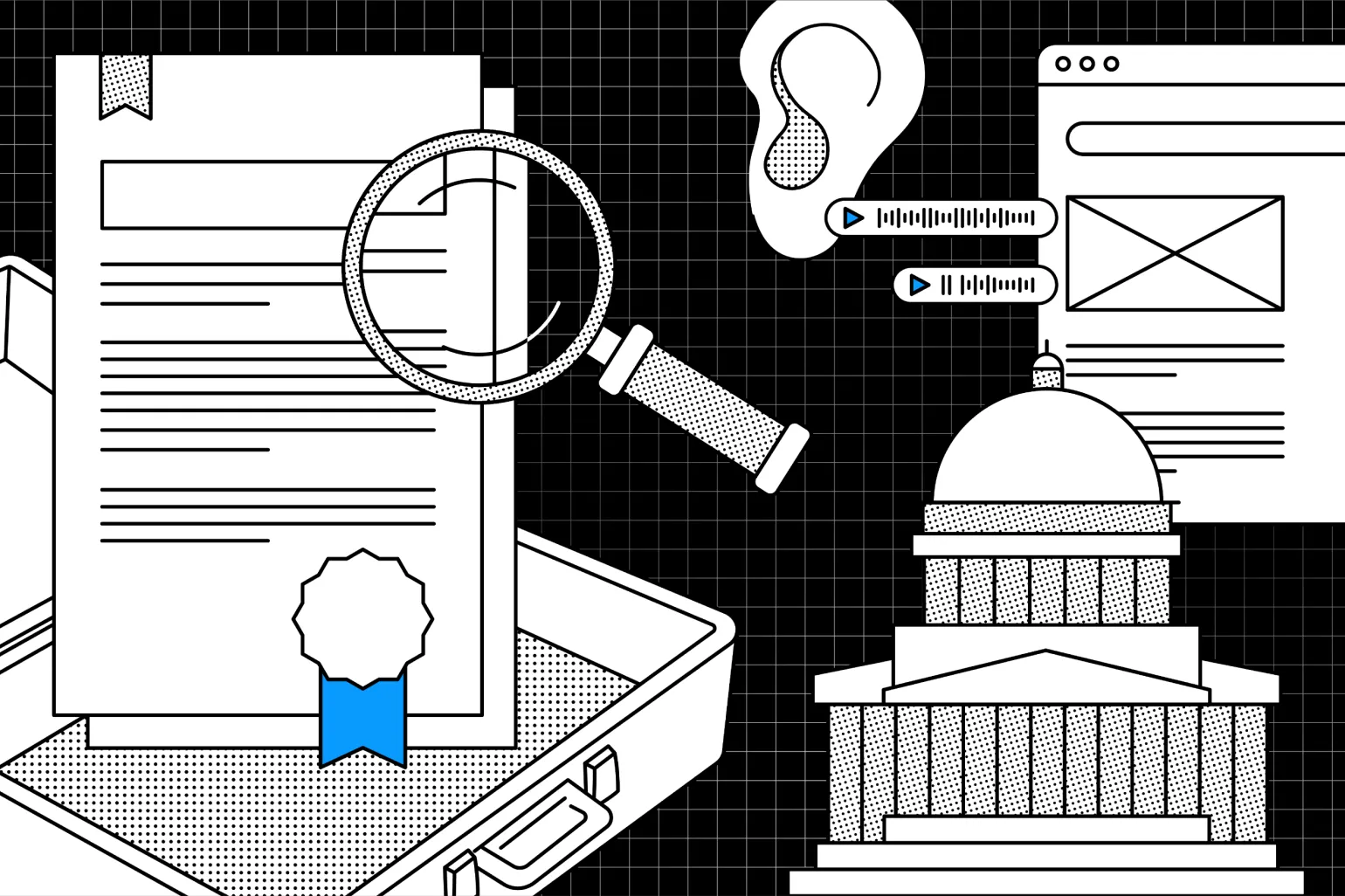ADA’s Impact and Beyond

Worldwide, an estimated 1.3 billion people, or 1 in 6, experience a significant disability. On the anniversary of the passage of the Americans with Disabilities Act (ADA), we’re highlighting trends in inclusive design and the history of accessibility legislation. Check out our comprehensive Accessibility Toolkit to learn how we apply these best practices.
“Disability is an opportunity for innovation,” said Haben Girma, a disability rights advocate and the first deaf–blind individual to graduate from Harvard Law School. July 26 marks the anniversary of the Americans with Disabilities Act. Nearly 35 years after the ADA’s passage in 1990, best practices for inclusive design continue to grow, thanks in part to evolving technologies that are helping to make digital content accessible to everyone.
Trends in Technology, Design, and Accessibility
Artificial intelligence (AI) has the potential to significantly affect accessibility.
AI-powered technologies can automate captioning and transcription, enhance image and object recognition for visually impaired individuals, and improve accessibility across digital interfaces. However, ensuring that AI systems are designed inclusively and do not reinforce biases or exclusionary practices remains a challenge.
Assistive technologies continue to evolve.
Assistive technologies include screen readers, speech-recognition software, alternative-input devices, captioning and transcription tools, tactile interfaces, and other tools. They provide individuals with disabilities greater access to information, communication, and daily activities. Creativity and a desire to create better processes have continued to push our imaginations on how we can use and adapt technical advances.
Inclusive design is at the forefront of creators’ minds.
The concept of inclusive design, also known as universal design, has gained momentum. Inclusive design involves creating products, services, and environments that are accessible and usable by people with a wide range of abilities and disabilities. It keeps accessibility in mind from the start, rather than retroactively adding accessibility features.
Awareness and advocacy have grown.
Recognition of the importance of accessibility and the rights of individuals with disabilities continues to grow. Activists, organizations, and advocates are working to raise awareness about accessibility barriers and push for improved accessibility standards and regulations in various domains, including education, employment, transportation, public spaces, and digital content.
Designing with empathy and compassion can make a world of difference to the audiences we want to reach. Check out our Accessibility Tool Kit for tips and best practices for creating accessible design across digital spaces.
Milestones Leading to the ADA
The current landscape of accessibility rights has been shaped by a long history of developments, each playing a crucial role in creating equal opportunity and experiences for individuals with disabilities.
The Architectural Barriers Act of 1963 was one of the first steps toward the ADA.
It addressed significant obstacles to employment for people with disabilities by requiring that all structures planned, built, modified, or rented using federal funds must meet accessibility standards.
The Rehabilitation Act of 1973 took things a step further.
This act prohibited discrimination against people with disabilities by federal agencies, federal contractors, or programs receiving federal funds. It also introduced requirements such as reasonable accommodation and served as a crucial precursor to the ADA.
What really set change in motion, however, was the Capitol Crawl.
On March 12, 1990, a group of people with disabilities abandoned their wheelchairs and mobility aids to crawl up the steps of the U.S. Capitol Building, drawing attention to the lack of accessible entrances and building awareness of disability rights.
The ADA legislation passed on July 26, 1990.
President George H.W. Bush signed the ADA into law, extending essential protections to individuals with disabilities beyond government-owned and -operated spaces. The ADA’s scope encompasses individuals using public services and places, including restaurants, hotels, and theaters. It also mandates that employers must make reasonable accommodations to enable employees with disabilities to effectively perform their job duties.
The Olmstead v. L.C. and E.W. decision focused on community integration.
This 1999 civil rights case established that the unwarranted segregation of people with disabilities constitutes unlawful discrimination under the ADA.
The ADA Amendments Act of 2008 broadened the ADA’s scope.
This act clarified the definition of disability, making it more inclusive and ensuring that a broader range of individuals are protected under the law.
As we look backward to appreciate how far we’ve come, we’ll continue to incorporate new tools and best practices to ensure that digital content is inclusive and meaningful for every audience.

